5 Summer Activities to Boost Reading Fluency
Summer break is a time to recharge, refresh, and relax; however, for many teachers, it’s bittersweet. After an entire year of getting to know your students, guiding them toward personal and academic growth, and investing countless hours helping them to meet their individual learning goals, it’s hard to hand over the reins and stop worrying about their progress.
As I wave (maybe a bit too happily) at all the school buses pulling away on the last day of school, I can’t help but wonder about the fate of my students’ reading growth: I wonder if Sophie will continue to read over the summer. Is Sally going to practice her sight words? How many reading strategies will I have to reteach Bobby in the fall? Will my second graders forget ALL the reading skills they mastered? The “summer slide” is a real thing and the reality is that reading isn’t usually a priority for most students in the summer. So what can we do?
Well… what if we take a few extra steps to prepare our students for the summer? We can introduce ideas and activities that don’t feel like “work” but can help them maintain their reading skills. The students can relax and recharge, too, but without losing sight of their learning progress and goals. We can enlist the support of parents and encourage them to make reading a priority over the summer. We can ask families to make a summer reading plan and work together to prevent students from losing all the valuable skills they developed over the past year. (Sounds magical, right?)
Not sure where to start? I always start with reading fluency. It’s the glue that holds many of the reading skills together and promotes a better understanding of texts. With fluency, students are able to maintain their reading skills with texts that are at their independent levels. The truth is, no matter the grade-level or learning need, fluency is a skill we could all use a little extra practice with. Plus, fluency practice can be fun (especially for our struggling readers)!
Emphasize the Importance of Practicing Fluency
Before sending home activities for the summer, it’s important for parents to understand the foundations of fluency – what fluency is and why it’s important. Below are a few fluency-specific links to support parents who are looking to help their children at home with summer fluency development. You may also wish to check out my post on avoiding the dreaded summer slide with “fluency fun.” It included some general fluency activities, helpful links for parents, and free printable fluency task cards to send home with students for the summer.
Helpful Resources for Parents:
- 5 Ways Parents Can Increase Their Child’s Reading Fluency (readingpartners.org)
- Summer Reading and Fluency: Tips for Parents (readingrockets.org)
- Reading Fluency Activities (readingresource.net)
Five Interactive Summer Activities to Boost Fluency Skills
There are many activities that can boost reading fluency skills over the summer, but students often need the support and encouragement from parents or caregivers to complete these activities. Below are five ideas for parents to help boost fluency skills this summer! The activities are engaging, interactive, and wonderfully effective for summer fluency development!
**This section contains affiliate links. Click HERE to learn what that means!
1. Partner Reading
The first activity is a simple and obvious (but oh-so-powerful) one… read with your child! Not only do children love this extra shared time with parents, but it provides them with a model of what good fluency sounds like.
There are many different ways to partner read:
- I Read/You Read – You and your child take turns reading a book, making sure he/she is following along or whisper reading along when it’s not his/her turn.
- Echo Read – You read and then the child reads the exact same sentence, using the parent’s model of fluent reading to guide how to change his/her voice to match the text for phrasing, expression, accuracy, etc.
- Paired Reading – Choral reading together, as one. Both parent and child whispers or reads the page aloud. This helps model appropriate pace and intonation, and encourages your child to match his/her voice to what your voice is doing.
- Fill-in-the-Blank Reading – You read a sentence but leave out certain words for your child to fill in. This helps your child practice automatic recognition of sight words and familiar vocabulary using the context.
- Readers Theater Reading – You and your child have an assigned part in a back-and-forth structured partner play or poem. Texts designed “for two voices” are meant for partner reading, but regular picture books can also be used. One person can be a narrator and one can do all the character speaking parts. (Check out some of my readers theater style partner poems!)
Sometimes reading with your child every single night is just not realistic with busy summer schedules (baseball games, dance rehearsals, swimming lessons, sports camp… I get it!). On those busy nights, set your child up to do Buddy Reading with someone else… a younger sibling, a pet, or even a stuffed animal in the car on the way to baseball practice. Just the act of reading aloud to someone else is effective for fluency practice! (Remember, the book should be an “easy read” at the child’s independent level. Familiar, repeated readings are even better for this.)
2. On-the-Go Fluency Bag
Find a bag (any bag!) and fill it with fluency materials. The idea is for you to bring it with you on all your summer adventures – in the car, to the store, on vacation… really, anywhere! When you’re not “on-the-go” you can keep it inside and use it for various transition times throughout the day (i.e., while you’re cooking dinner, while your child is waiting for a friend to come over, before bedtime, etc.). You can also use the fluency bag as a “ticket out the door.” For example, have your child read something from the bag before leaving the house, exiting the car, or getting up from the dinner table. Embed this fluency practice as part of your daily routine and use this extra time as an opportunity for fluency development.
Fill the fluency bag with independent-level books, poems, and/or fluency cards. The idea is for all the materials to be read aloud multiple times until your child can read the words accurately, automatically, and smoothly, while attending to punctuation and expression. The repeated reading of each of these materials is important, as this helps your child build automatic recognition of the words and strengthens the overall comprehension of what they are reading. (NOTE: If the book, poem, or word card is new and not familiar, model it for your child first!)
When your child feels he/she is ready for new materials, have them read the book, poem, or fluency card for you aloud. You can be the judge of whether or not they are ready for new materials. (I would suggest waiting at least a week to switch up the materials, even if they seem to be mastering it rather quickly!)
FLUENCY CARDS: You can easily make these yourself using index cards (have your child help you) or there are plenty of free online resources you can print. These fluency cards can be tasks or even phrases, sentences, short paragraphs, knock-knock jokes, tongue twisters, fun facts… anything that gets your students reading for fluency! (See resource links below.)
ALTERNATIVE: You can use a jar, bucket, or any container instead of a bag! A Fluency Jar doesn’t have to be anything fancy. Use an old trail mix jar or one of those large animal cracker buckets. The jar can sit on the kitchen counter, ready to go with fluency cards and sentences. Or you can just fill up a beach bucket. A Fluency Bucket can sit on your deck or outside near the pool, ready to go for fluency practice before kicking off some outside play time. It really doesn’t matter what you use… just as long as your child is reading and practicing. Pick what works for you… something that you can incorporate into your day-to-day routine! 🙂
3. Fluency Games
Turn games you already own, like Candyland, Trouble, and Chutes and Ladders , into fluency board games! Just modify the directions to include a fluency task. For example, in order for a player to move his/her game piece, he/she has to read a fluency card with a phrase, sentence, or short paragraph/poem/rhyme using all the components of fluency! You can also print blank board game templates to use with the fluency cards.
You can also use fluency cards with familiar games like Tic-Tac-Toe, Hangman, Go Fish, Memory, Connect Four, and BOOM. Check out this website of sight word games that can easily be adapted for any type of cards you have (words, phrases, sentence, paragraphs, tasks, etc.).
4. Poem of the Week
Poetry is always the perfect tool for fluency development because of its structure and natural rhythm. Create a poetry folder and pick a poem to read each week with your child. You can follow the sample schedule below, or create one that works for your family!
- Monday: Model reading the poem for your child (1-2x) and then echo read line by line. Make sure your child can decode all the words.
- Tuesday – Thursday: Practice reading the poem each day. (You can even place it in the “on-the-go” fluency bag for repeated readings!)
- Friday: Your child can perform the poem for you or the entire family.
**You can even video or audio record your child reading the poem on Monday and then on Friday so everyone can reflect and celebrate his/her fluency progress!
(Need some poetry resources? Check out Poetry4Kids for some silly poetry!)
5. Song Lyrics
Practice fluency with familiar song lyrics!This activity is perfect for older students and wonderfully motivating for reluctant readers who lack reading confidence. Have your child provide you with a list of his/her favorite songs and search for the lyrics on AZLyrics using a computer or mobile device. Make sure the lyrics are age-appropriate and then print out a copy of the lyrics. Here are the steps:
- Step 1 – Have your child listen to the song and silently read along with the lyrics in his/her head. Pay attention to the fluency of song (i.e., pace, phrasing, attention to punctuation, expression), as well as the song’s rhythm. You may wish to clap along with the beat to get a feel for the rhythm (this will help guide the pace and phrasing of the read-through).
- Step 2 – Model reading the lyrics with good fluency (not singing) to your child without the music and go over any unknown words. You may need to echo read or choral read some of the lines that are more difficult.
- Step 3 – Have him/her practice reading each line of the song aloud with the music artist first. Practice until your student can read the lyrics (not sing or recite) without the music.
- Step 4 – Your child should be able to then read the lyrics independently and fluently, without the music!
You may need to repeat some of the steps if the song is more challenging. Keep in mind, the goal is for students to read not recite, so make sure his/her eyes are on the page following along with the words for every single step!
If you’re interested in learning more about using music for fluency development, check out this article by Shari Edwards on the Scholastic website.
Want to get the family involved? You can even practice fluency karaoke style! If you own a smart TV or have a media streaming device you can display the lyrics to the song right on the TV using YouTube Karaoke Channel. If you have an iPhone or iPad, you can even download the free Karaoke App for karaoke fun!
Download a Free Summer Activity Parent Handout
To help your students include fluency activities in their summer reading plans, I created a printable resource that you can download and share with their parents. This handout is free for my email subscribers. If you’d like to download the worksheet, complete the form at the bottom of this post or click HERE or access it from my resource library.
Looking for Extra Resources to Support These Activities?
Free Word Card Resources:
- 50 Tongue Twisters for Family Fun (Everything Mom)
- 30 Hilarious Jokes for Kids (Frugal Fun for Boys and Girls)
- Trivia & Fun Facts (Funology)
- Fluency Punctuation Strips (ReadingResource.net)
- Short Fluency Phrases: Set 1, Set 2, Set 3 (ReadingResource.net)
- Fry Fluency Sentence Resources (The Curriculum Corner)
Books:
- Tongue Twisters for Kids (Riley Weber)
- 500+ Jokes, Tongue Twisters, and Fun Facts (J.J. Wiggins)
- 99 Torturous, Tricky, Tough Tongue Twisters (John Jester)
Fluency Task Cards:
- Summer Fluency Task Cards (Free)
- Daily Fluency Task Cards (Lower Level)
- Daily Fluency Task Cards (Upper Level)
*Learn more about how to use fluency task cards to support reading fluency here!

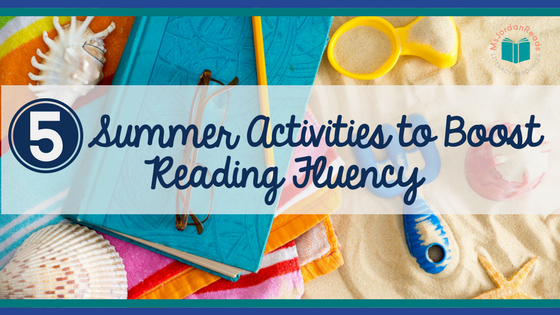
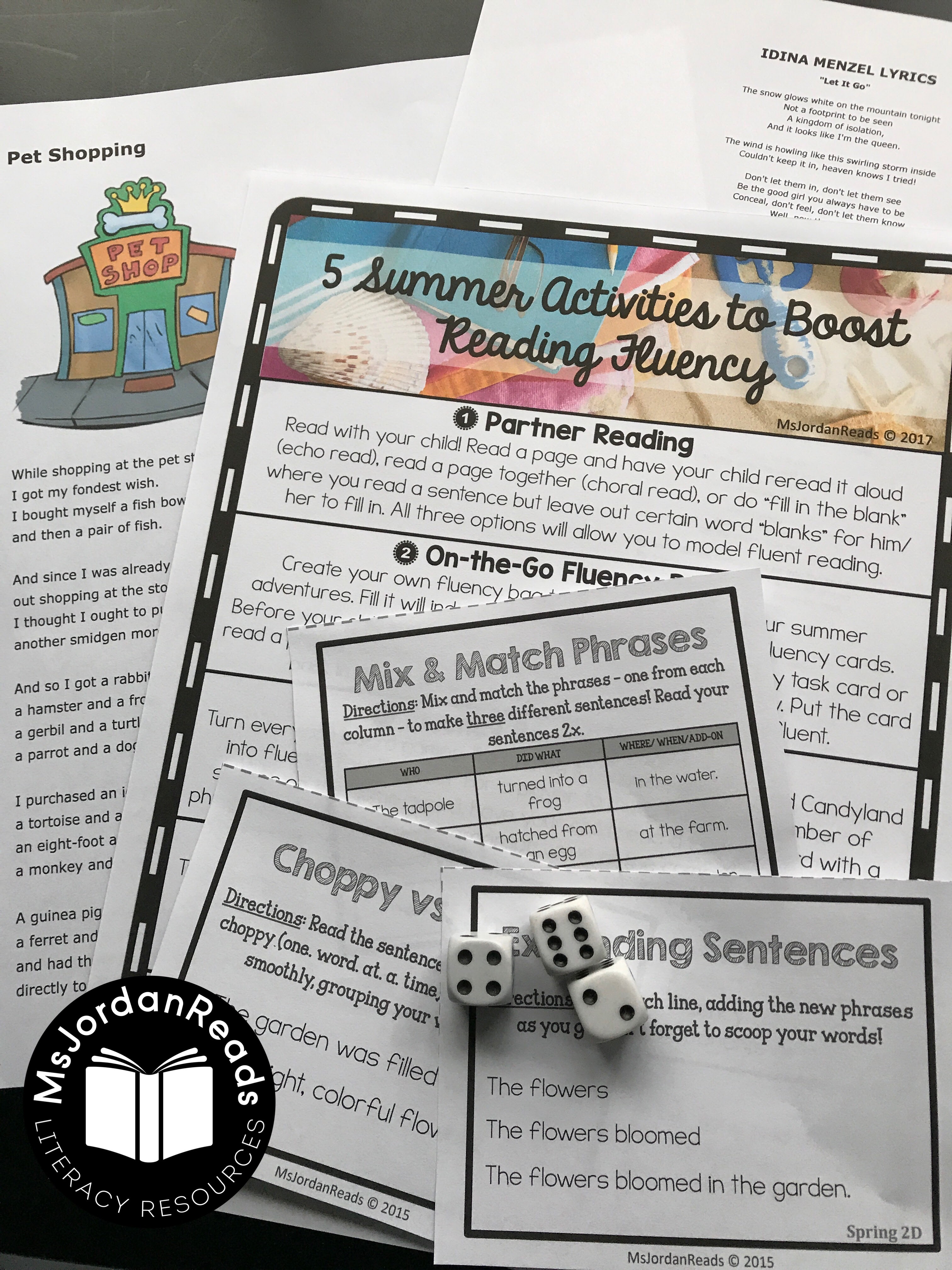
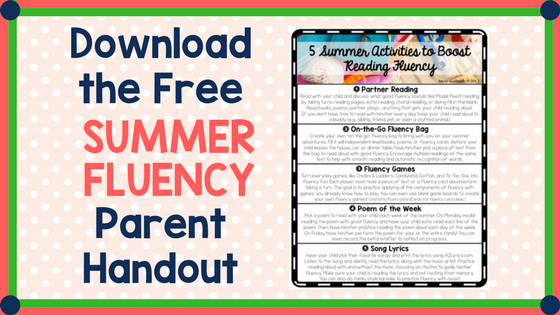
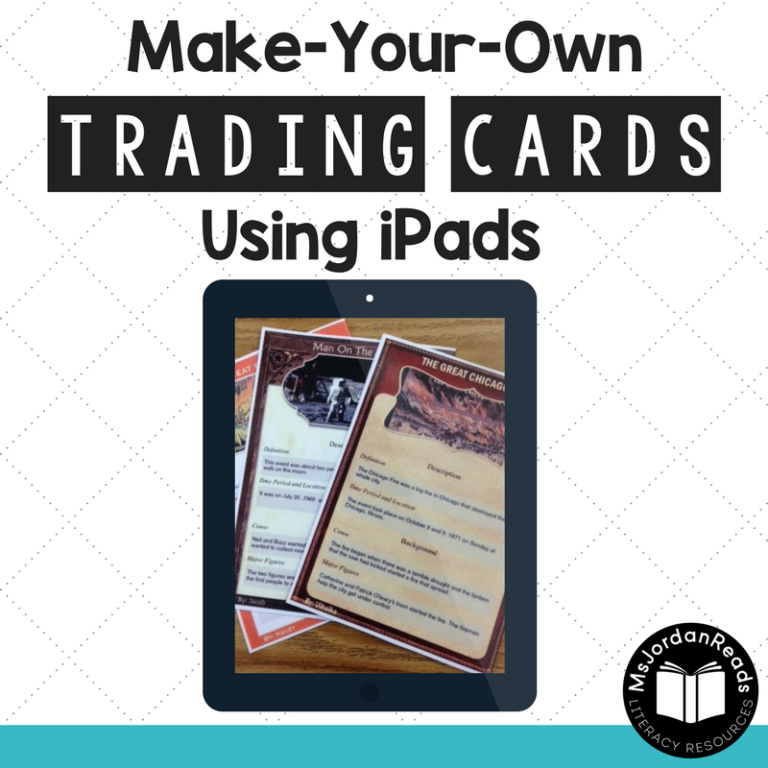

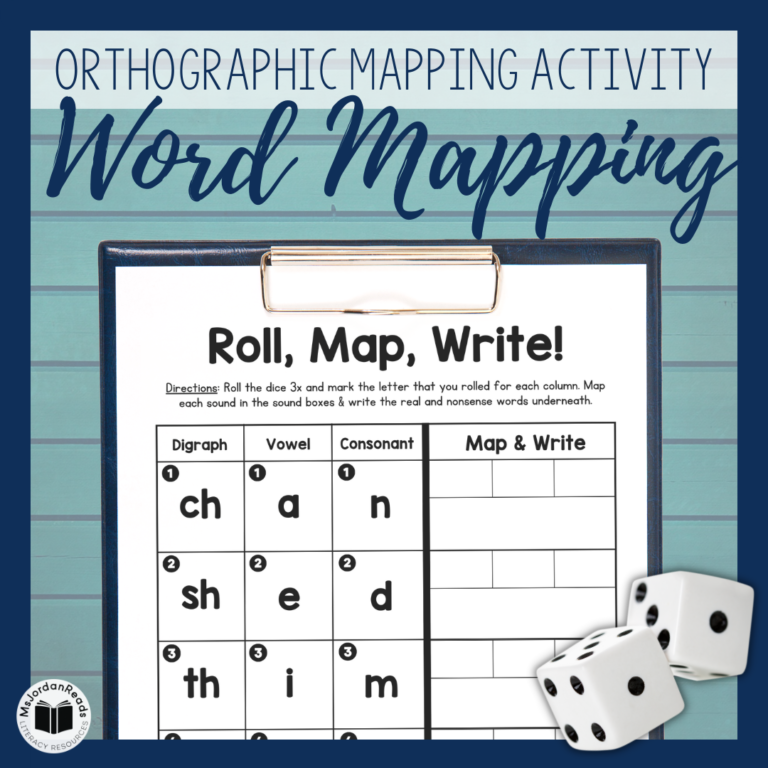

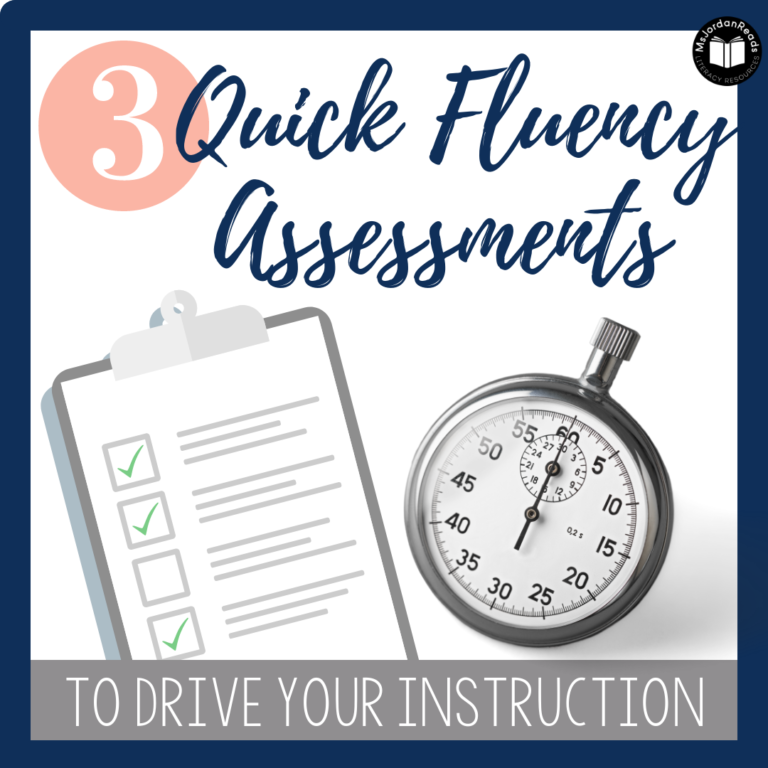
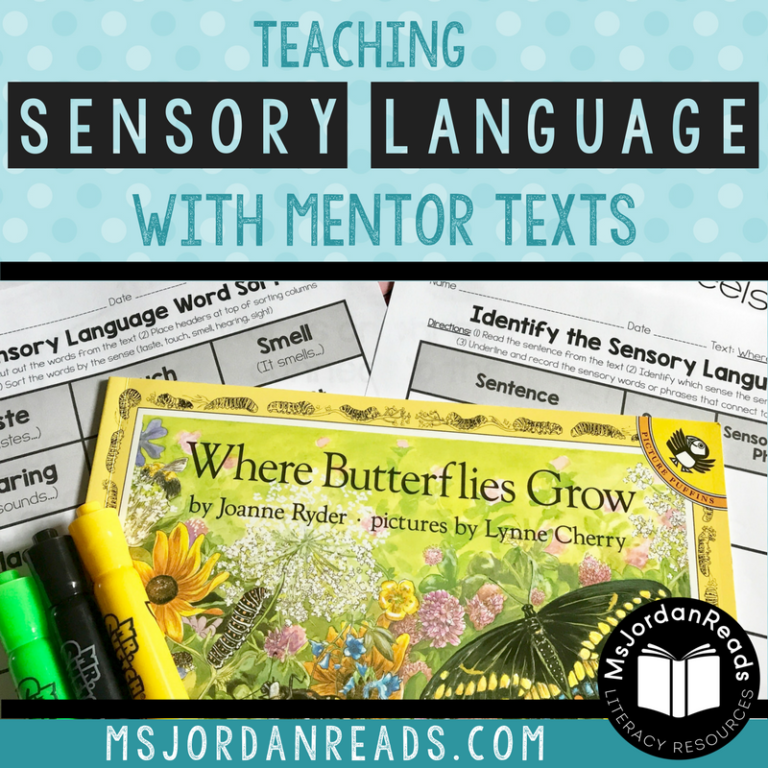
So many great ideas for fluency practice! I’m definitely saving this post for future reference. Thanks for sharing!